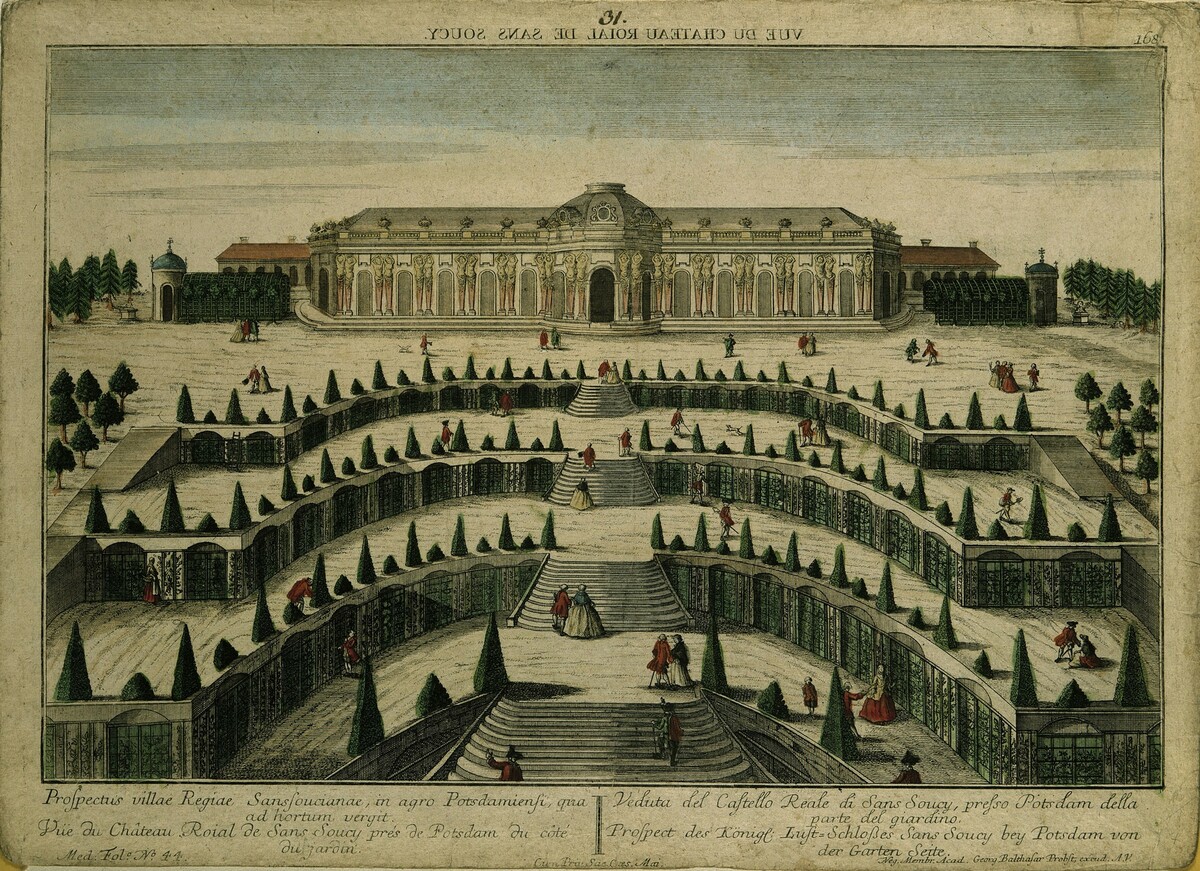Abstract
Toward the middle of the eighteenth century, the monumentality of
Baroque architecture gave way to Rococo, which emphasized delicacy,
playfulness, and refined ornamentation. Frederick II’s Sanssouci Palace
in Potsdam near Berlin is one of the most celebrated examples of the
Rococo style. Intended as a sanctuary and summer retreat, Sanssouci was
reserved for the monarch’s private pursuits. It was there that he hosted
privileged guests, such as the French
philosophe Voltaire (1694-1778), who
stayed at Sanssouci from 1749-53. The image below is from a
boite d’optique (peep box), an early
stereoscopic device popular in the seventeenth and eighteenth
centuries.
